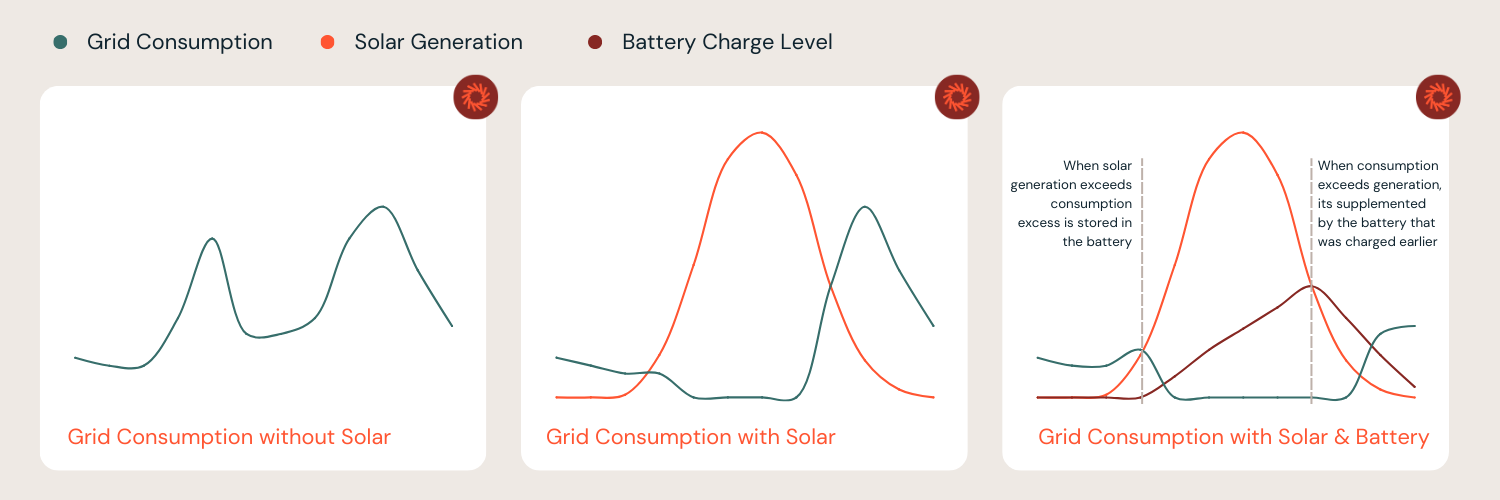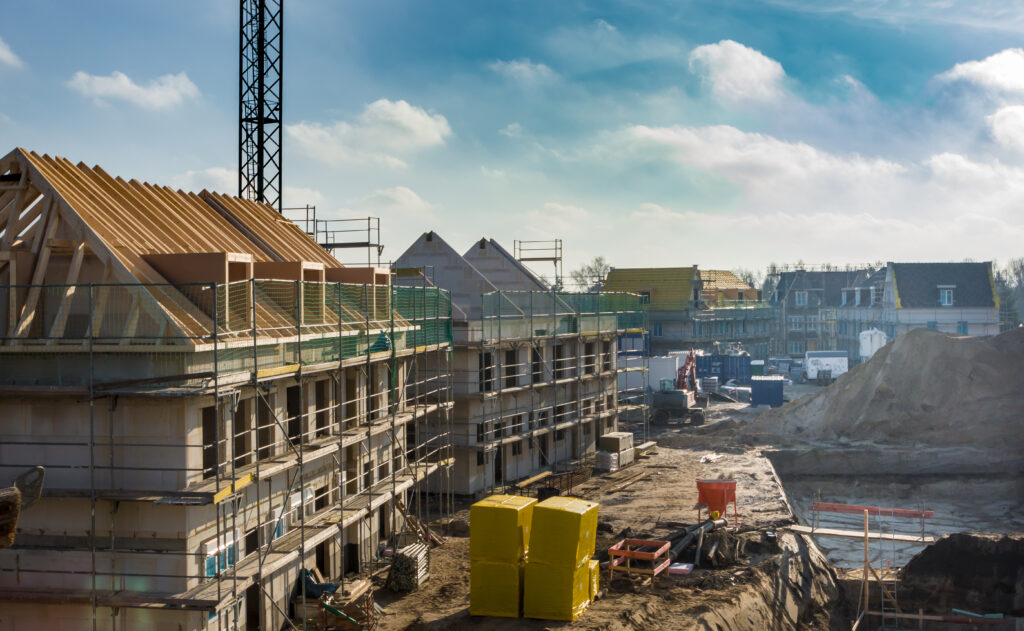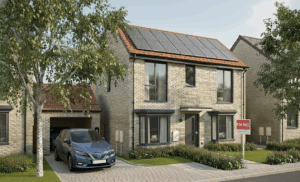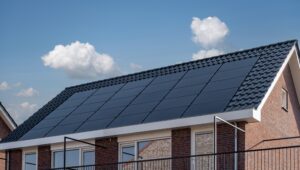As grid capacity tightens and planning policies demand lower-carbon homes, housebuilders are increasingly hitting a wall: grid constraints. These issues can delay projects and even derail them entirely. But on-site solar and battery storage systems, especially when delivered through CAPEX-free models like Gryd’s, offers a powerful route to making previously unviable sites stack up again – without waiting years for infrastructure upgrades
Very few homes are currently being delivered with battery storage, which is creating a growing problem. Without a way to manage when solar energy is used, we risk compounding the very challenges that come with renewable generation – predictable but variable supply, leading to more extreme peaks and troughs in supply and demand. In turn, this places further pressure on already stretched grid infrastructure, requiring costly upgrades to accommodate short but intense spikes in load.
What Are Grid Constraints and Peak Load Shaving – and Why Do They Matter?
Grid constraints refer to the limited capacity of the local electricity network to support the energy load of proposed new developments. In practical terms, this means that a new housing site may be told it can’t connect to the grid without costly reinforcements or delays.
Without targeted upgrades, a development could hit a hard limit on power availability. That means fewer homes could be connected, sharply increasing costs for developers or reducing the value of a site, making projects non-starters.
Peak load shaving is a strategy that uses on-site renewable energy sources – such as solar and battery storage – to reduce the demand on the grid during times of highest electricity usage, known as “peak load” periods. By generating and using solar energy locally, developments can avoid putting extra strain on the network.
It’s not just high demand that creates problems – it’s also excess generation. When solar output is high and local usage is low, that surplus energy gets exported back into the grid. If too much is sent at once, it can overwhelm local infrastructure. The substation becomes the bottleneck in both directions: struggling to supply enough power during peak demand, and unable to absorb surplus energy during peak generation.
Battery storage is key to managing both sides of the equation. It captures excess solar energy when generation is high – rather than flooding the grid – and stores it for use later, when demand rises. This helps smooth out supply and demand, avoids overloading the substation, and supports a more stable, flexible local energy system. And, crucially, it enables more homes to be built without waiting for costly grid upgrades.
The Impact on Project Viability
If the cost of connecting to the grid is too high – say, due to the need for a substation upgrade or cable reinforcements – a project may be deemed financially unviable. That can mean pausing or even abandoning developments that are otherwise shovel-ready. This is particularly true for edge-of-grid or rural sites, which are more likely to experience limited capacity.

A Hypothetical Case: 500-Home Development
Take a 500-home development facing a quote of £1,000,000 for grid connection upgrades due to demand levels, thats an additional £20,000 of build cost per home that may not have been factored in. By incorporating battery storage into the solar system on each home, the developer can apply the principle of peak load shaving – reducing the site’s impact on the local network significantly.
With Gryd’s system, that could be up to 1kWp demand reduction at the local substation per home with a 10 kWh battery – cutting aggregate peak demand by up to 500kWp. In this scenario, the network operator may consider a significantly reduced scope of upgrade works at a much lower cost.
Those savings can be the difference between a stalled and a viable site.
Planning Pressure for Lower-Carbon Homes
Planning authorities are increasingly prioritising sustainability. Several local plans now require new homes to exceed Part L, include on-site renewables, or demonstrate net-zero readiness. In addition, the UK government has announced that rooftop solar will soon be mandatory on almost all new homes – further cementing the role of solar in compliant new-build schemes.
Integrating solar through models like Gryd’s not only satisfies these planning pressures but does so without upfront capital expenditure. That makes it easier to meet low-carbon requirements while keeping the project financially on track.
How Solar and Battery Storage Reduces Grid Load
By generating and storing power on-site, smart solar systems with battery storage reduce a home’s reliance on the grid, especially during peak times of demand.
With Gryd’s subscription-based solar and battery systems, developers could expect to see up to 1kWp reduction in site demand per home. Across an entire development, that adds up fast on multi-home schemes and can allow the site to be classified within a lower grid threshold category.
Tips for Navigating Grid Constraints
- Engage DNOs early: Understand your site’s capacity limits before design is finalised.
- Use demand-reducing tech: Solar and battery systems can reduce required capacity.
- Explore CAPEX-free models: Gryd offers solar and storage with no upfront cost to developer or buyer.
- Factor planning gains: On-site renewables can ease planning approval, especially in sustainability-focused LPAs.
Grid constraints for new builds don’t need to be a dealbreaker. With smart tech, a clear strategy, and the right partners, developers can unlock sites once considered out of reach. Solar doesn’t just tick a box for planning – it can redefine the financial viability of your entire project.
If you’re facing grid limitations or exploring ways to future-proof your developments, get in touch with Gryd. Our CAPEX-free solar and battery solutions are designed to help housebuilders overcome energy barriers and deliver low-carbon homes at scale. Let’s talk about how we can help unlock your next site.



